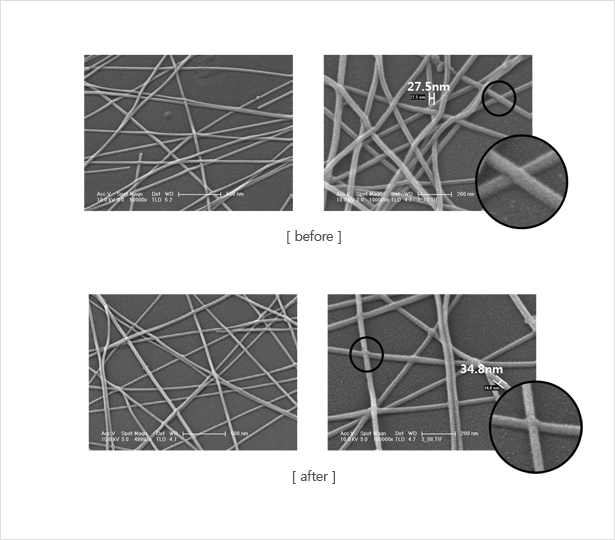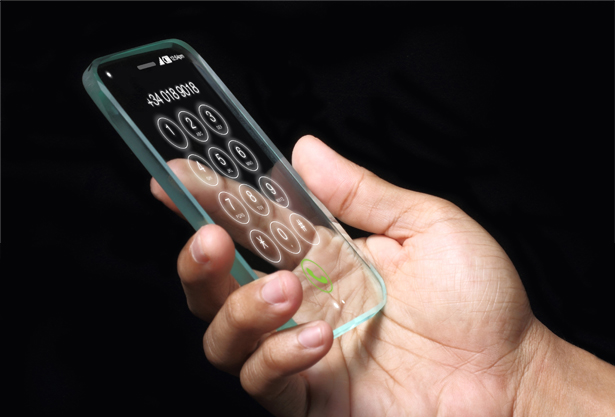
Transparent Flexible Display Era is Coming Up
Technology to Produce Next-Generation Transparent Electrodes Using Electron Beam
Development of original technology to produce transparent silver nanowire using electron beam
ETRI researchers have successfully developed technology to develop transparent electrodes applicable to transparent flexible displays and touch sensors, by using electron beam along with silver (Ag) nanowire, a next-generation transparent electrode material that can replace ITO electrodes.


Silver nanowire has outstanding electrical conductivity and small diameter, being able to be used for network-structure transparent electrodes. In addition, it brings the cost down thanks to the application of a printing technique and can be adopted for flexible displays by means of a curved surface. However, it has low efficiency because of high contact resistance between wires and poor distributed process technology.
In order to overcome such shortfalls, the researchers chose the pneumatic drying processing involving the thermal wind and a method of radiating electron beam within a short time. After evenly distributing silver nanowire across substrate, they successfully formed silver nanowire electrodes with a high transparency of 89 percent and low sheet resistance of 50Ω/sq by radiating an electron beam for a short time.
In this process, the research team found that the overlapping parts of wires were connected, as if being welded, within seconds after the electron beam was radiated upon silver nanowire. As a result, the contact resistance between wires fell, significantly reducing the sheet resistance of overall silver nanowire and maintaining a high transparency.
Applicable to flexible displays and touch sensors
Dr. Chan-hwa Hong of the Nano Interface Device Research Section said, “The newly developed technology enables us to produce metallic nanowire transparent electrodes within a short time that can replace ITO.” The technology of producing silver nanowire by means of an electron beam is highly useful in improving the electrical properties of metallic nanowire material and has potential to be used for a range of displays, touch panels, and flexible devices. In addition, it can be adopted for shopping malls, museums, and building lobbies. The research team is anticipating commercialization of the technology at the earliest possible date in coope ration with industrial partners. The research results were published in Scientific Reports, the publishing group of the world’s renowned Nature.
